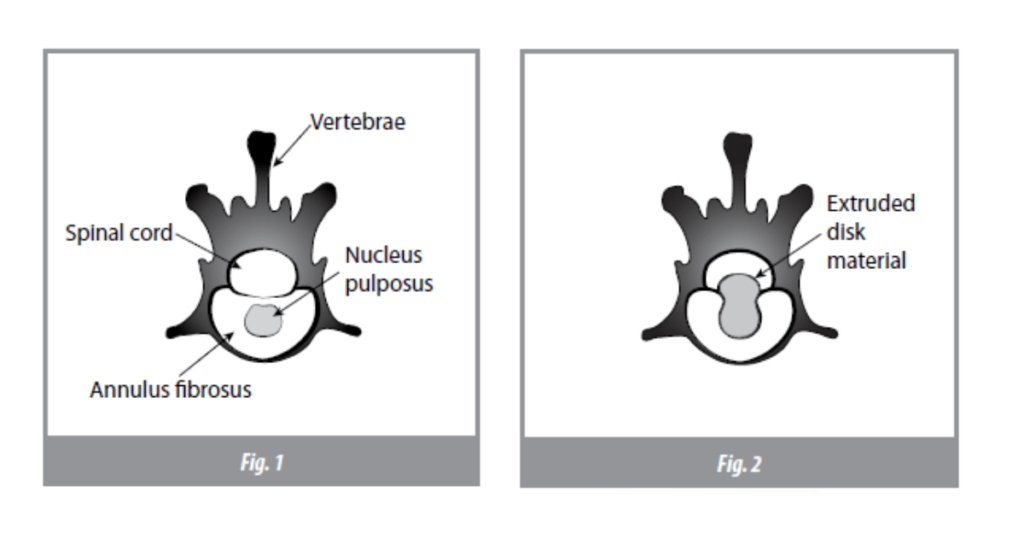Intervertebral Disc Disease (IVDD) and Treatment in Dogs
Intervertebral discs are the “cushions” in the space between spinal vertebrae. There are several degenerative conditions and forces that can cause these discs to bulge or rupture over time, which can lead to spinal cord damage. One condition, called intervertebral disc disease (IVDD) is the most common cause of spinal cord injury in dogs.
IVDD is most common in short-legged breeds, like dachshunds and beagles but can occur in any dog, and sometimes, even cats. These dogs have been bred for their short stature, which makes them more prone to degeneration and hardening of the soft center material of the disc that normally serves as a shock absorber (Fig. 1). Without this cushioning, rupture of the disc and subsequent spinal cord trauma can occur (Fig. 2).

Common Locations for IVDD
The two most common locations of IVDD are thoracolumbar (mid-spine) and cervical (neck). Dogs with IVDD usually have neurological dysfunction (weakness, inability to walk, etc.) and experience severe pain.
The signs you report in your dog as well as our physical examination help us localize the IVDD to certain areas of the spine:
- Cervical IVDD – Patients usually have a history of painful behavior accompanied by crying out without apparent reason. Less frequently, they have forelimb lameness caused by a pinched nerve. Pain in the neck when moved or touched, a tense neck, limb weakness, and wobbly gait are typical symptoms. In extreme cases, paralysis can occur in all four limbs or two limbs.
- Spinal IVDD – Patients generally present with sudden or progressive rear limb weakness. The severity of the symptoms varies from mild weakness to complete paralysis with an inability to feel pain in the affected limbs.
The Treatments for Canine Intervertebral Disc Disease
Treatment varies depending on the type of symptoms your pet is experiencing. Dogs with mild signs often see improvement within 48 hours with oral anti-inflammatory medications and cage rest. Dogs that do not respond to medication or are experiencing more severe or progressive symptoms may benefit from diagnostic imaging and surgery.
IVDD surgery involves creating a small window in the bone around the spinal cord to gain access to the disc material. The material is removed, relieving spinal cord compression to relieve the pain and promote healing to improve your pet’s quality of life.
Pet Care Resources
For ways to ensure your pet lives a happier, healthier life, visit our Pet Care Resources library.
View ResourcesPet Care Resources
For ways to ensure your pet lives a happier, healthier life, visit our Pet Care Resources library.
View Resources